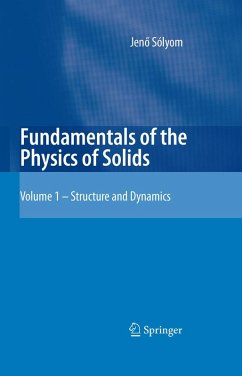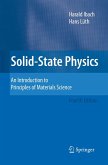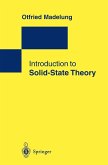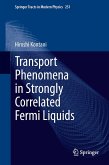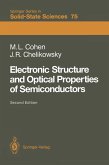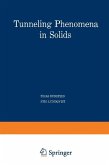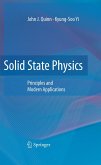This book is the first of a three-volume series written by the same author that aims to deliver a comprehensive and self-contained account of the vast field of solid-state physics. It goes far beyond most classic texts in the presentation of the properties of solids and experimentally observed phenomena, along with the basic concepts and theoretical methods used to understand them and the essential features of various experimental techniques.
The first volume deals with the atomic and magnetic structure and the dynamics of solids, the second with those electric properties that can be understood in terms of the one-particle approximation, and the third with the effects due to interactions and correlations among electrons.
This volume covers four major topics. After a brief history of solid-state physics, the introductory part presents the classification of condensed phases, describes the basic features of atoms as building blocks of solids, and analyzes how atoms bind together to form solids.
The second part deals with structural aspects. The symmetries of crystalline solids and their consequences are covered in detail.
Deviations from crystalline order either due to defects or in form of quasicrystalline or noncrystalline structures are also discussed. The third part is devoted to the theoretical description and experimental observation of lattice vibrations. Finally, magnetism due to localized magnetic moments is treated both phenomenologically and quantum mechanically.
The text provides ample material for upper-level undergraduate and graduate courses. The book also serves as a valuable reference for researchers in the field of condensed matter physics.
The first volume deals with the atomic and magnetic structure and the dynamics of solids, the second with those electric properties that can be understood in terms of the one-particle approximation, and the third with the effects due to interactions and correlations among electrons.
This volume covers four major topics. After a brief history of solid-state physics, the introductory part presents the classification of condensed phases, describes the basic features of atoms as building blocks of solids, and analyzes how atoms bind together to form solids.
The second part deals with structural aspects. The symmetries of crystalline solids and their consequences are covered in detail.
Deviations from crystalline order either due to defects or in form of quasicrystalline or noncrystalline structures are also discussed. The third part is devoted to the theoretical description and experimental observation of lattice vibrations. Finally, magnetism due to localized magnetic moments is treated both phenomenologically and quantum mechanically.
The text provides ample material for upper-level undergraduate and graduate courses. The book also serves as a valuable reference for researchers in the field of condensed matter physics.
Dieser Download kann aus rechtlichen Gründen nur mit Rechnungsadresse in A, B, BG, CY, CZ, D, DK, EW, E, FIN, F, GR, HR, H, IRL, I, LT, L, LR, M, NL, PL, P, R, S, SLO, SK ausgeliefert werden.
From the reviews: "This first volume ... focuses on crystal structure and lattice dynamics. ... provides a substantial amount of theoretical material at an advanced graduate level. ... There is more material here than can be covered in a single semester, and this book is more detailed than the well-known books ... . This volume would be most attractive for a one- or even two-semester advanced graduate course, and is a desirable reference work anywhere condensed matter/solid state/materials research is conducted. Summing Up: Recommended. Graduate students through professionals." (M. C. Ogilvie, CHOICE, Vol. 45 (11), 2008) "This is the first volume of three textbooks used by author to teach a two or three semester solid-state physics course at Eötvös University in Budapest. ... We found the text very self-explanatory, very student friendly, and highly useful. ... In conclusion, this first volume is an excellent textbook that we recommend for a solid-state physics course ... . Many students and solid-state research fellows will find it easy to learn from this book even without help from a professor." (Fernande Grandjean and Gary J. Long, Belgian Physical Society Magazine, Issue (1), March, 2009)

